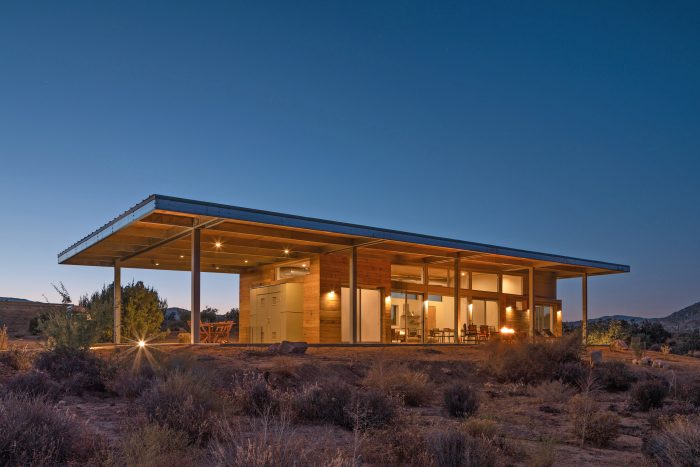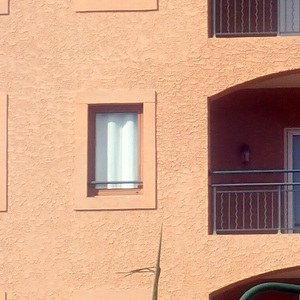
Historically, energy-efficiency experts have devoted more attention to houses in cold climates than houses in hot climates. This isn’t due to unfounded prejudice; it’s due to the fact that houses in cold climates have higher annual energy bills than houses in hot climates. (In 2015, for example, the average home in the Northeast required 94 million BTUs per year; in the same year, the average home in the South required only 69 million BTUs per year.)
Why do homeowners in hot climates pay less for energy? The main reason: on a miserable day in Florida, the difference between the outdoor temperature and a comfortable indoor temperature (the delta-T) is only 30 Fahrenheit degrees. On a miserable day in Vermont, however, the delta-T is 90 Fahrenheit degrees—and it takes much less energy to overcome a 30-degree delta-T than a 90-degree delta-T.
GBA has always had lots of advice for designers of cold-climate homes. In this article, I’ll focus on hot-climate homes.
How many ways are there for my home to heat up?
We’ll start with a basic question: How do homes get hot?
Weekly Newsletter
Get building science and energy efficiency advice, plus special offers, in your inbox.

This article is only available to GBA Prime Members
Sign up for a free trial and get instant access to this article as well as GBA’s complete library of premium articles and construction details.
Start Free TrialAlready a member? Log in















15 Comments
Wonderful summary, Martin!
One piece of frequent advice on this site, specific to cold climates is that, in a pretty good or better house, bedrooms can vary from the temperature in the rest of the house. ie centrally located minisplits can deliver all the conditioning needed; the bedrooms end up 3-5 degrees colder. And that's ok because we prefer to be colder when sleeping.
In hot climates, though, this doesn't work at all, since without conditioning bedrooms will end up 3-5 degrees warmer. Couple that with added heat and moisture load from breathing people/animals/en suite showers and there is trouble.
So you write above, "If you plan ahead, a few ductless minisplits can keep your home comfortable." So part of that planning ahead is ensuring sufficient conditioning in the bedrooms.
Yet the bedrooms are small, the minisplit heads are large. Issues ensue (too many CFM making uncomfortable breezes, periodically too cold, then too hot, insufficient humidity removal, not to mention noise in the bedroom).
So I think we should put a big question mark over the "a few ductless minisplits" approach in hot climates. At the very least it should be ductless centrally, but always ducted minisplits/dehumidifier for bedrooms. Once one plans for ducts in the bedrooms, one can also deliver sufficient fresh air, always a plus.
James,
Thanks for your comments. What you say makes sense, and I have edited my article to reflect your point.
There is, perhaps, a larger context to this whole discussion: there is a wide range of temperatures at which people feel comfortable. Some people who live in a hot climate disdain air conditioning and prefer to live with fans. While you are right that most people prefer to sleep in a cool bedroom, there are exceptions to this rule.
In all cases, though, homeowners prefer a well-designed HVAC system to one that can't keep rooms at the temperature desired by the residents.
Martin,
Working in the very different temperate but wet PNW, I've often wondered if it might make sense to detach the roof from the structure below? That would provide a large sheltered area covering the living spaces, some of which would be inside and some outside. It would also separate the various functions of the roof, which when all mashed together can be problematic.
I wonder if that might not also be something to consider in hot, dry climates? In a similar way it would provide shelter from the sun, but also stop the transfer of heat to the house below. This speculation is based entirely on - nothing very solid, but has been tried by other designers. Any thoughts?
https://www.jetsongreen.com/2009/06/desert-modern-rimrock-ranch-house.html
Malcom, I love this design. I see no reason why it wouldn't work in cold climates too
Nick,
Similarly the house used to illustrate the article could easily have a similarly detached roof - but maybe the effect isn't consequential enough to warrant it?
Malcolm,
For years, ever since I noticed that some homes in Goa, India, were shaded by a palm-thatched wall-and-roof system separate from the stone structure of the building, I've been intrigued by this idea. You're right that it has many advantages over conventional roofs.
The major disadvantage of this approach is the high cost. You'll notice that the photo you linked to includes a substantial steel structure, and that's not cheap.
A "poor-man's" version of this might be a metal roof offset by the roof's WRB/substrate with 3/4" furring strips -- there would be some thermal bridging with the furring strips but lots of airflow otherwise to decouple the majority of the conductive transfer. And I put "poor-man" in quotes because metal roofs aren't common here in Phoenix, at least, and so they are egregiously expensive.
As I write the above, it occurs to me that metal roofs tend to have high emissivity, so maybe there would still be notable radiation in that 3/4" gap. Given that, a radiant barrier sheet with low-emissivity foil might do better?
Regardless, this isn't something commonly done here at all so I do wonder as well if it doesn't perform as well as it seems like it should.
Kurt,
The least expensive way to reduce heat flow from a roof to the interior of your house is with insulation. If you want better performance, thicken the insulation layer on your attic floor or your roof assembly.
Martin,
Sure. One of the first things I did after moving into my circa-1980s house (slump block walls w/ zero insulation and maybe R-20 ceiling insulation) was have R-60 cellulose blown in and sealed the in-attic ducts (alas, 99.9% of houses around here have ducts in unconditioned attics). From a cost-benefit perspective, that's hard to beat and I probably made up that cost in the first few years living here.
But... the attics get well into 160F-180F range (I've personally measured 165F in mine) and that's a good 80F delta-T compared to the living space below. Even R-60 will mean that the A/C runs for many hours every day, and that takes a LOT of energy plus results in cold air blowing on all of us the entire time.
So that's when I move from pure cost-benefit to the dual secondary goals of reducing energy use and making the house more comfortable to live in. Just ceiling insulation doesn't cut it there.
Triple pane windows; radiant barriers in the attic; and wall insulation well in excess of the code are all examples of "diminishing returns" improvements that will rarely have a reasonable payback period but they undeniably result in lower energy usage and the A/C having to kick in less frequently, and every little bits helps from a comfort perspective.
The "disconnected roof" that Malcolm describes and the "poor-man's" version I tossed out would both be examples of changes that are hard to justify in any payback period but if they could shave 20F (or more?) off the delta-T between the attic temp and living space then it could absolutely still be worth doing for the other reasons.
I'm glad to see this excellent summary. One comment and one question.
The building in the lead photo has glass down to the floor level. That's against the guidance to avoid excessive glass area, and it also raises a point not addressed in the article: the lower the glass goes, the wider the overhand needs to be to effectively shade the window. In the pictured design, the overhang might be large enough that even the bottom of the window is shaded, but it's something to consider carefully. The savings could be significant counting both a reduction in glass area and a reduction in the necessary overhang.
Question: you say "it’s hard to beat a concrete-block wall insulated with a continuous layer of exterior rigid foam" [e.g. with R-10]. But conventional 2x6 wall construction beats that and avoids the CO2 emissions of concrete. In some climates, you can get some benefit from the thermal mass of the concrete, but it's a carbon-intensive way to get that benefit, and the scenarios in which it is a real benefit are pretty limited. What is your thinking on that recommendation?
Charlie,
The photo was not chosen as an example of perfect design. It's simply an image of a hot-climate house.
Concerning the concrete-block wall: You failed to quote the opening clause in my sentence on concrete blocks: "If you want the best possible energy performance of your walls..." I stand by that statement (although you're right that the thermal mass of the concrete doesn't help in all climates or all possible examples of diurnal temperature swings). I should have written, "If you want the best possible energy performance and termite resistance for your walls, ..."
Note that interior thermal mass shifts the timing of daily air conditioning loads to later in the day -- helping to reduce peak loads for utilities.
You're absolutely correct that green builders should try to limit their use of concrete, because Portland cement is so energy-intensive to manufacture. I appreciate your comment, and I have edited the article to reflect your point.
Charlie,
There is a lot of glass on all but the west facade, but the windows (mainly sliding glass doors) that descend to the floor level are all on the north side. What I particularly like about the house is there doesn't seem to have been any obvious architectural compromises to end up with a pretty climate appropriate design.
https://www.archdaily.com/975753/cowboy-modern-desert-eco-retreat-jeremy-levine-design
Thanks, good to know that it's actually a good design, with those positioned on the north side. One can still question whether bringing the glass all the way down to the floor is worth missing out the the higher R-value that you'd get with a normal wall section for the first 1-2 feet, given that the additional view you get is only of the patio floor, but it's clearly a well-thought out design considering the issue I raised.
Charlie,
I agree. Architecturally I find floor to ceiling windows make a wall feel cold and unapproachable, and I hate patio doors.
Thank you Martin for the article. Most articles I see are for cold climates, and I live near Sacramento with mild Fall, Winter and Springs, and sometimes very hot, dry summers. I'm considering renovating my 30-year home to much better insulating standards (Exterior insulation and rainscreen, increase overhangs from 3 inches to 3 feet, replacing original HVAC and HW with heat pump technology, and enclosing/conditioning small attic area & possibly crawlspace.) We currently only need to use AC June-September, and heating December-February. I'd appreciate any references to articles about retrofitting existing homes (especially in hot climates).
Thanks again!
Log in or become a member to post a comment.
Sign up Log in